If you landed on this post it means you’ve already considered starting your own blog, right? If you want to learn step by step how to start a blog of your own, you’re in the perfect place!
It’s one of the most profitable online businesses right now and I want to help you lay that first stone and show you step-by-step how to start a blog and make money in 2022.
Blogging has been around for quite a long time now. Many people have been able to earn a full-time income with their blog.
In fact, blogging is like any other business. It requires hard work, skill and money.
The cool thing about this business model is that it doesn’t require a big investment upfront.
If you’re looking to start a blog with ZERO money, I’m afraid this isn’t possible.
So, in this article, I’ll walk you through the basics of how to start a blog that makes money.
However, I can’t guarantee that you’ll make X amount of money in X amount of time. Simply because I don’t know how much effort you are willing to put into this.
Most successful bloggers will tell you that they’ve put in long hours, even months of hard work before they’ve seen the money pouring in.
This is to say that your results will really depend on a few important factors such as invested time, effort, quality content and so on.
A Word of Encouragement
Let me encourage you to keep the focus on your desire to learn how to start a blog and make money.
I’m speaking to all of you who might be ‘non-techy’ people or who are a bit overwhelmed by all the information you’ve already read online about dealing with WordPress.
I will keep things simple so you can get started asap because the most important thing is to start.

One thing I don’t want you to “fear” is the blogging platform itself.
WordPress is the most robust and recommended platform for blogging but the back-end interface can be pretty intimidating for beginners like you.
As you’ll be spending the majority of your time there, you’ll see how easy it is after fooling around for a few days.
Ok, let’s move on!
Choosing your niche
First of all, you must find a niche.
A blog niche is simply a blog that contains exclusive content about everything on a particular broad topic.
For e.x, you can create a blog around parenting niche where you’ll provide articles about parenting tips, how to raise kids under two, best foods for kids etc…Do you get my point?
Content exists in the form of “how-to” articles, video tutorials, review articles etc…
Taking time to properly choose a niche is essential because your content will revolve around it for quite a bit of time.
While niche diversity also exists in blogging, I will encourage you as a beginner to stick to one or two specific niches.
Don’t over-complicate your life or you’ll easily quit.
What I mean by stick to one or two specific niches is you don’t wanna try to compete with the huge bloggers by starting a blog that covers every topic under the sun.
You can succeed but the progress will be very slow.
Instead, choose one main niche and a second related niche.
You might have read about this controversy around choosing a niche but I personally think there should be a balance to the way we approach it.
Some experienced bloggers will say you must write about your passion while another category of bloggers will recommend writing about already-established niches.
Personally, I agree with both. That’s why I talked about balance. Thinking of this in a balanced perspective will definitely help you pick the right niche for your next blog.
A Failing Passion
I’m a musician and I love everything about this niche. This is my passion you see.
I can talk about all my favorite guitar players for hours, comment non-stop on the recent drum covers I watched on Youtube, etc..
I was even writing 3-4 blog posts per day about this niche for one of my blogs a few years back.
But you know what? The blog failed miserably. In this case, my passion for that niche didn’t help me raise an income.
There were a few reasons why the blog failed. The main one was because the content was centered on me, on my passion for that niche.
The problem with choosing a niche based on passion is you may end up writing content focused on you, on how passionate you are, on your experiences instead of producing content that your audience wants.
Maybe I’ll share this experience in another post.
Don’t Reinvent The Wheel
After recovering from this failure, I started a new blog and this time I chose the weight loss niche.
Although I lost 18.7kgs in 8 months a few years ago, I didn’t find myself motivated enough to start a blog to make money from this niche.
I did it only because I knew it was a super profitable niche and that I could reap a lot in a few months.
When I kicked off with the content for the blog, I thought I was going to burn out very fast because after a few articles talking about ways to lose weight blah blah blah, I didn’t know what to write next.
But when the profits began rolling in, I had this desire to write more quality content about that niche and the inspiration just rolled in.
While not trying to reinvent the wheel this time, I finally find success. Why? Because this niche has already proved to be very profitable.
I just had to tap into an existing huge audience and introduce my high-quality content and products to the thirsty searchers.
So, in this scenario, you can see that a passion to write about this niche grew as soon as I started seeing concrete results and income.
This niche has proven to be very profitable over and over again. It was an important factor that made me succeed with my weight loss blog.
I hope you see where I’m going with this little debate. Do your homework before choosing your niche.
Now let’s see how to start a blog successfully by equipping yourself with the right blogging tools and resources.
Setup Your Domain & Hosting
Secondly, after choosing your niche for your blog, you’ll want to purchase your domain and your hosting.
A domain is basically the address name of your blog (www.thatwowlifestyle.com, www.cnn.com and so on) and the hosting is where this domain will live.
In a few words, your hosting company will support and protect your domain.
Your Domain
After days of research, you finally decide which niche you’ll blog about and it’ll be time to purchase your domain accordingly.
One of the best domain registration platforms I’ve personally used for almost 7 years is Namecheap.
They usually offer lower pricing for high-quality domain and the customer support is top-notch.
Your Hosting
Choosing to start a blog to make money on WordPress is a wise decision that you won’t ever regret.
And the hosting is as important as well. I always recommend to new bloggers to get a self-hosted blog.
Website providers like Wix, Blogger or Squarespace are easy for beginners. It’s true but I don’t recommend them at all if your goal is to make money blogging.
I’m listing below a few reasons why:
- They may be very cheap or free but not enough customizable if your goal is to start a blog for profit
- Google has become very smart and sophisticated over the years and they regularly update their ranking factors.
- Free site builders like the ones I’ve mentioned above are very slow to react to these changes. As a result, your website won’t get ranked and no one will ever see your amazing content.
- While you may find it very easy and quick to set up, you won’t ever have full control over your website.
- Most importantly, if you want to make money blogging, customizing your website to include banners with affiliate links might not be a no-brainer, sometimes impossible.
So, the first best hosting that works perfectly with WordPress is Hostgator. It’s the best one on the market with the most affordable pricing, which is $3.95/month and they’ve been recognized as the best hosting platform for blogging.
So, look no further and create your hosting account with Hostgator in a few seconds.
Click this link to go directly to their website with all the instructions you need.
How To Add Your WordPress To Your Hosting Plan
After purchasing your domain and hosting plan in Hostgator, it’s time to install WordPress on your hosting and later upload your blog theme.
- Login to your hosting account
- Go to your dashboard and click on cPanel
- Search for “QuickInstall”
- Click on “WordPress”
- Choose your new domain in the drop-down menu
- Add a few details and then click “Install”
See steps in image below:
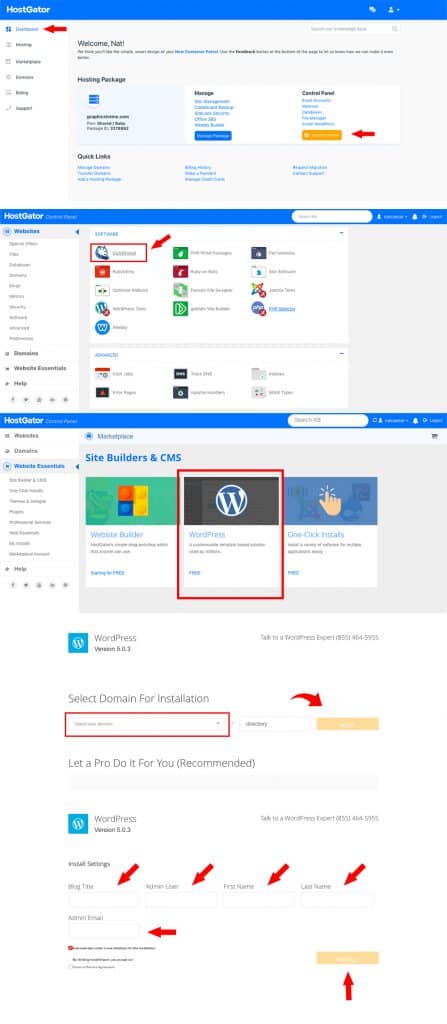
After installing WordPress to your hosting, you will receive by email the address you will use to login as an admin to be able to upload and customize your blog theme.
Now it’s time to bring your theme in its environment for customization! Yayy!
The address you will get is usually https://yourdomain.com/wp-admin. Your username and password will be the ones you’ve chosen in the steps before.
Choosing A Blog Theme
Next step is to purchase a beautiful WordPress blog theme. Your blog theme is the template that will display your blog content.
You will customize it to your personal taste or branding needs by adjusting different things like the homepage, adding your content, choosing colors and more.
As a Creative Director, I’m a great advocate for visual beauty. But I also recommend not to set your focus on beautiful blog themes only.
Your blog has to guide your audience to a specific purpose and if you focus on the visual aspect only, you might end up losing sight of that initial purpose.
You might choose a beautiful blog that you love but it might not convert as well as you’d expect. I’m not saying that you should choose an ugly one either.
At this stage, you should be able to balance things before taking the right decision.
With that being said, most themes are pretty easy to customize because they offer the drag & drop feature. But there are also professional themes that have some level of difficulty.
What I can do is redirect you to a few of the best marketplaces where you can grab a good theme. It is ok to download a free theme but I insist that you should get a paid theme.
The best marketplace to buy professional WordPress blog themes is Creative Market.
Recommendation
The main reason why I don’t recommend free themes if you’re a beginner is because of support.
Let’s say you’ve already spent 3-4 days perfecting your blog theme and got stuck somewhere, chances are the developer might not respond to your query.
Most developers offer support to paid members only.
As a result, you’re losing your precious time waiting for their reply and if they never respond, you have no choice than to start over again with another theme.
Moreover, free themes are very basic and don’t offer many customization options and they may not be compatible with the essential blogging tools you will need to install.
If you don’t know where to find amazing blog themes, just head over to Creative Market. They have the most beautiful and professional blog themes for only $39-$59.
Now that you’ve purchased your amazing blog theme, it’s time to give it the look and feel you want. Don’t forget to keep in focus the purpose of your blog!
How To Upload Your Theme Into WordPress
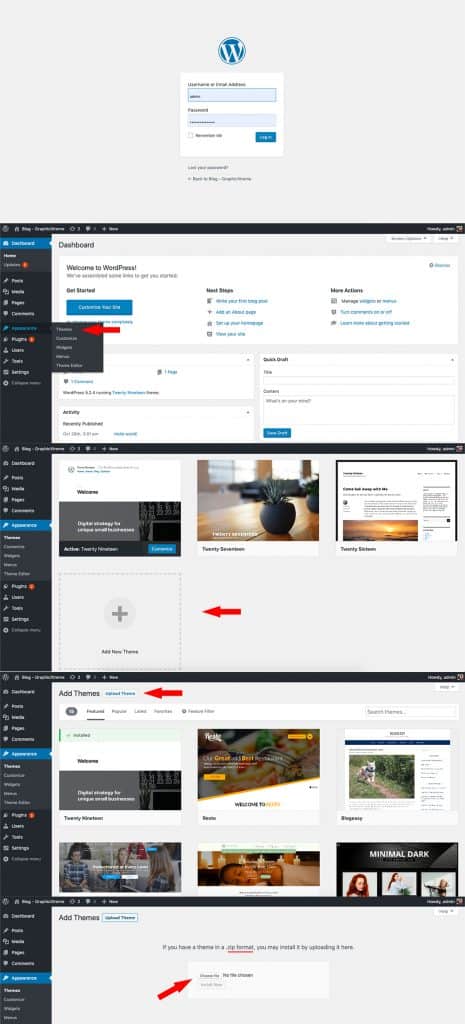
You’re now ready to customize your theme. Don’t panic when you see the WordPress dashboard. The theme developer always includes tutorials and guides inside of WordPress itself to help you out.
Essential Plugins
Plugins are essentially extensions that perform specific actions/tasks on your website. Consider them as apps on your smartphone.
Your blog theme can’t fully work without plugins and there are some plugins that are extremely important because they help secure your data, enhance your page speed and do other tasks that will contribute to improving your ranking in search engines.
Let’s see a few of them that you need to install right away:
- Yoast SEO – Best plugin that will help you search engine optimize your articles.
- While writing your blog post, Yoast will give you a reading and keyphrase analysis. This way you’ll know straight away what you should improve in your content.
- UpdraftPlus – Probably one of the preferred backup plugins of many WordPress bloggers. So many useful options in the free version.
- WP Reset – In the event, you want to change a theme completely, you don’t have to delete things manually.
- The plugin will do it for you. One cool thing about this plugin is that if you want to delete the content only (posts, pages, etc) and keep the actual theme and your installed plugins, WP Reset is smart enough to do this.
- W3 Total Cache – This is the most essential plugin you’ll have to install for page speed purposes.
- Your page speed is an important ranking factor for Google. This plugin will delete unnecessary caches on your blog and therefore optimize it to be more rapid.
- WP AutoTerms – When doing affiliate marketing, it is mandatory that you display some important notice about these compensation programs.
- So, this plugin has pre-written policies done for you such as privacy policy, disclosure, terms of service and so on.
- Lucky WP Table of Contents – When writing lengthy blog posts, it’s super important to add a table of content so that the user can easily scan the article.
- Create SEO-friendly table of contents for your posts, pages or custom post types.
How To Install Plugins in WordPress
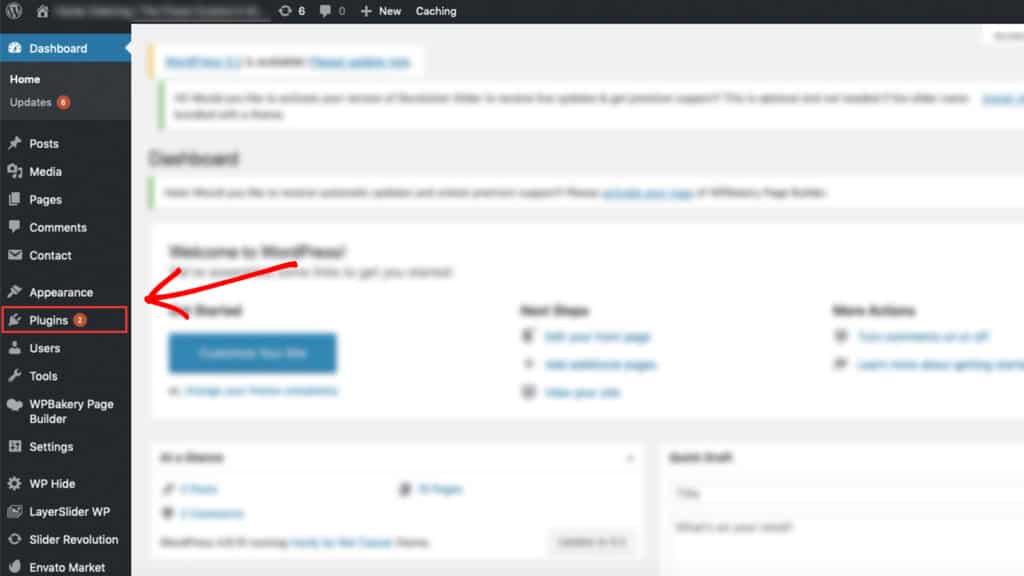
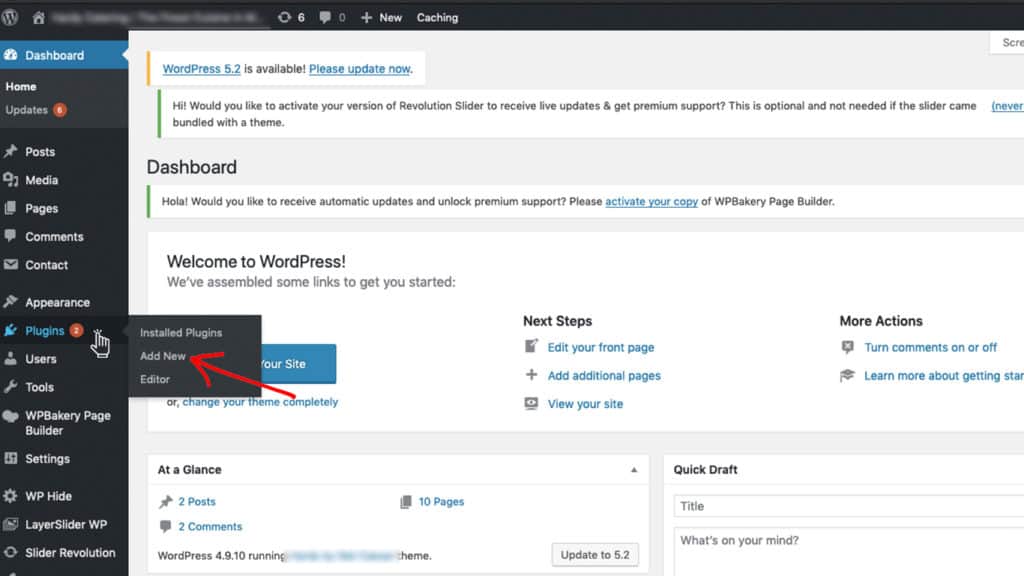
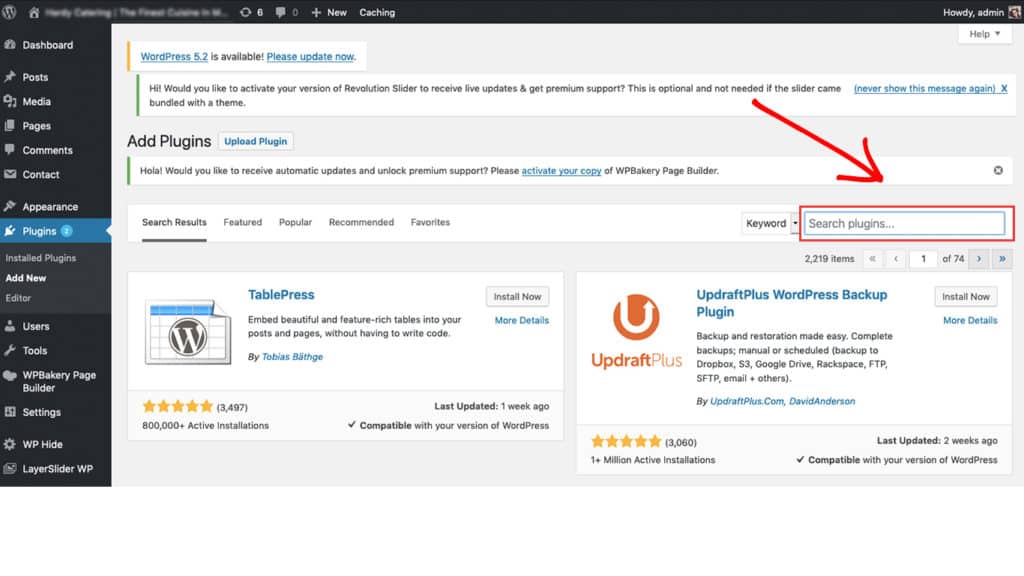
Keyword Research
In this section, I’ll talk about a foundational part of blogging.
You’re reading this article because your purpose is to earn an income from your blog.
Without a proper keyword research process, you won’t be able to create SEO-optimized content that Google will rank.
If your blog doesn’t rank, no one will see it even if your content is gold. As a result, no income at all!
This is to say that keyword research is one of the pillars of blogging.
If you master keyword research and know how to SEO your blog posts for top search ranking, you will definitely be successful with your blog.
What Is A Keyword?
In general, a keyword is one or many specific words you’ll want to rank for in the search engines.
Essentially, a keyword can be short (usually 2-3 words) or it can be a long one, which is also known as a long-tail keyword (self-explanatory).
A keyword is the exact words someone will type in Google or other search engines to look for solutions, your products or services.
If I can put it in those words, your keyword will be the center point of a particular blog post.
Your content will revolve around it because your goal is to appear in the search engines when a user is searching for something using these words.
For e.x, if a user is searching for “how to clean a carpet” in Google, your main goal is to feature among the first search results that Google will show up to the users searching for this keyword/keyphrase.
Of course, you wouldn’t want to place your keyword 30 times in your post, thinking you might rank faster.
This is a bad practice and is called keyword stuffing. You won’t even get ranked doing this but instead, your website will surely get penalized.
A keyword should be included naturally in the overall content of your article. Apart from the body of your article, a few places where your keywords should feature are the headline, sub-headings, alt text of your images and in your meta description.
It should look spammy neither to your reader nor to Google. Yoast recommends 3-4 keyword appearances for a 500-1000 words article.
And 5-7 times for an article over 2000 words. You see that keyword inclusion also depends on the length of your article.
How To Research Keywords For My Article?
Again, keyword research is a process of finding the appropriate words that a searcher will use to find a solution in the niche you’re in.
Thanks to some amazing guys in the SEO industry, we have some free and paid tools for this purpose.
Almost every paid keyword tool has a free version that should be fine for beginners like you.
Here are a few of the best keyword tools that you should make use of before starting to write your blog post:
- Ubersuggest (free)
- Ahrefs (paid trial/paid)
- Buzzsumo (free trial/paid)
- Semrush (free trial/paid)
I personally use these four because they complement each other I think. A feature might be missing in one but I can find it in the other.
Let me briefly demonstrate how this keyword thing works and how you should get started with it for your blog post.
Let’s say your blog is about weight loss. What you want to do is type that main keyword in Ubersuggest.
This tool will give you an overview of that keyword; what is the search volume for this keyword, how difficult is it to rank for it, some keywords suggestions to include in your blog post…
And they’ve just added the new backlink feature (which I’ll talk in a future post)

“As a beginner, you don’t want to rank for a head keyword…”
See how difficult it is to rank for this keyword! That’s why as a beginner you should try to rank for long-tail keywords first to get traction on your blog. As you’re gradually building your blog and getting domain authority through high-quality content, you can start aiming for higher competitive keywords.
This link below is one of the simplest explanation on SEO and the keyword research process by Hogan Chua.
Create A Planning

As soon as you finish customizing your blog theme, I recommend you to set up a schedule so that you stay organized, productive and don’t waste time thinking about what you should do next.
One thing that has helped me save time when I was still learning how to start a blog to make money, was preparing a list of the keywords I want to rank for and the articles I need to write.
In this learning phase, you ought to save as much time as possible. Doing a 15-min task that can save you one hour ahead is gold.
Of course, I never stick to this list at 100%, because sometimes when I’m writing an article, I often get inspired to write another article that I can link to the one I’m actually writing.
My point here is instead of wasting 2 hours of your precious time every day sitting and thinking about what you should write, create a schedule of posts in advance.
Thinking every single day of a new article name can become quickly daunting. I’ve been there a few times!
Realizing you’ve just wasted some precious time is really upsetting I assure you.
Your First Blog Post
Now that you’ve learned the basics of how to start a blog, you’ve reached this exciting moment of putting together your amazing content.
Writing your first blog will always be an exceptional moment as a new blogger.
Honestly, I didn’t like to write much since I left University. In fact, I’ve learned about how to start a blog in the year 2008 I guess.
But because I hated writing, I didn’t want to even think of getting involved in this business until 2017.
But I can tell you that writing has brought an amazing sense of satisfaction in me since Day 1.
And this blog post you’re reading actually was the first one on this new blog and it’s over 4000 words…I never thought I could write that much.
A “Welcome To My Blog” Post
While this is not mandatory, you won’t regret it if you start writing a welcome post.
I’ll never finish stressing on the fact that blogging is like any other business. If you agree with me on this, then you should build trust with your audience.
You’re a new blogger, no one knows you right? The first step is to show yourself to your audience, tell them about your background and most importantly, give them an insight as to the kind of content they can expect from your blog.
This way you can build a very targeted audience. Give them a foretaste of why they should follow you.
By telling people what kind of articles you’ll be sharing every day on your blog, you’ll do yourself a favor by deviating the ones who are not interested at all and those who’ll never be your customers.
Add Up Visuals To Keep Your Reader
It’s believed and proven that the human brain is attracted to visual.
Beautiful images in your content will produce excitement and willingness to read more.
So you better make use of good and beautiful pictures that will entice the reader to continue his/her reading experience on your website.
Of course, you don’t need to put an image after each subheading because you don’t want to distract your reader from the value that’s in the content but adding a few images to the content, will positively impact your reader.
Put a whole bunch of text in front of your audience and you can be sure your bounce rate will be more than 80%.
Your content can be jam-packed with tons of value but a big chunk of text only will make them leave your blog.
So, feel free to add a few images relating to what you’re saying in your article.
Proofread (w/ Grammarly)
I’ll mention this again, blogging is like any other business. So you have to present your content as professional enough for people to take you seriously.
One of the ways to do this is to eliminate grammar errors from your content.
You might be super good at grammar to correct your own content but if there are tools out there that can do this for you, why not use them? Check out this Chrome extension called Grammarly.
Remember if you want to learn how to start a blogging business, you’ll have to concentrate on other phases of it.
Blogging is not about writing what you think people will like. There’s an intense research stage that must be performed before launching anything.
Now What?
So, you’ve read all this and you’ve got the basics of how to start a blog and make money, how to create your first post and you’re asking what’s next?
Suppose your content is finally live on the internet, people must come across your fantabulous article.
No one will if you cross your arms and just wait for thousands of readers to flood your website. You are the one who should bring them to your blog.
This is called traffic generation.
You’ll agree with me that your super beautiful blog that has unique amazing content is nothing without traffic.
Traffic = Money
Where Will The Traffic Come From?
The internet is crowded with traffic and your audience is segmented in different channels of traffic.
Popular traffic sources these days are social media networks. However, it’s not recommended to rely solely on them because these will be fluctuating traffic.
You can see a ton of traffic as soon as you announce your latest published post. And the next days can be dead-empty.
On the contrary, organic traffic from search engines like Google is known to be recurrent and durable as well.
That’s why it’s crucial to SEO your blog articles so that Google finds and suggests them to its users.
Personal Recommendations
You might be a beginner in the blogging space but this must not stop you to think about how you can make money online from home.
However, in the first month, I will recommend you not to think about it. Put your focus on creating the best content for your readers.
When your blog has a good library of content and you have already worked on the SEO settings so that you get ranked, now you can start processing the different money avenues.
If you focus too much on the monetization process, this can distract you and can even affect the quality of your content. You know why?
Let’s say you want to earn money via affiliate marketing. You send your application to a few affiliate companies, they are taking forever to approve your application, you stop writing and start emailing them.
Then you get back to your writing but your mind is still with the affiliation process that’s taking too much time.
Finally, you start to get disappointed, you’re not enough focused to create high-quality content and the scenario goes on.
Conclusion
Blogging is not a get-rich-quick business model.
You can learn how to start a blog in 15 minutes but in reality, it takes time and hard work to see very good results.
While it can take 6-12 months to see some results from your SEO strategy, you can create your income much sooner if you know how to drive traffic to your blog.
Hope this complete guide has made it clearer on how to start a blog. Let me know in the comment section below if you’ve enjoyed these blogging tips for beginners
*** This post may contain affiliate links. Please read our disclosure for more info ***






